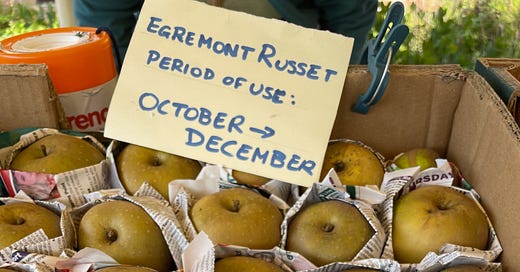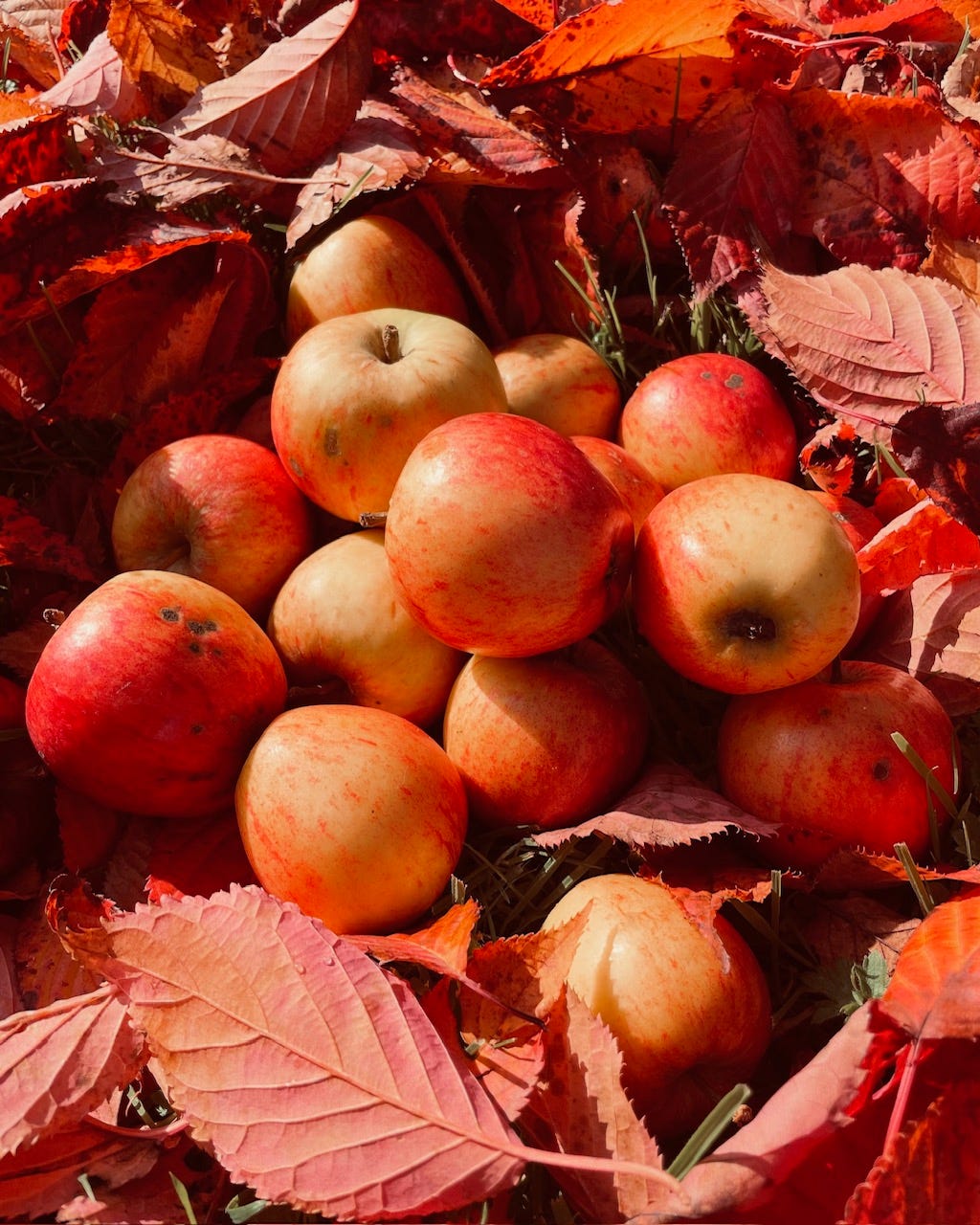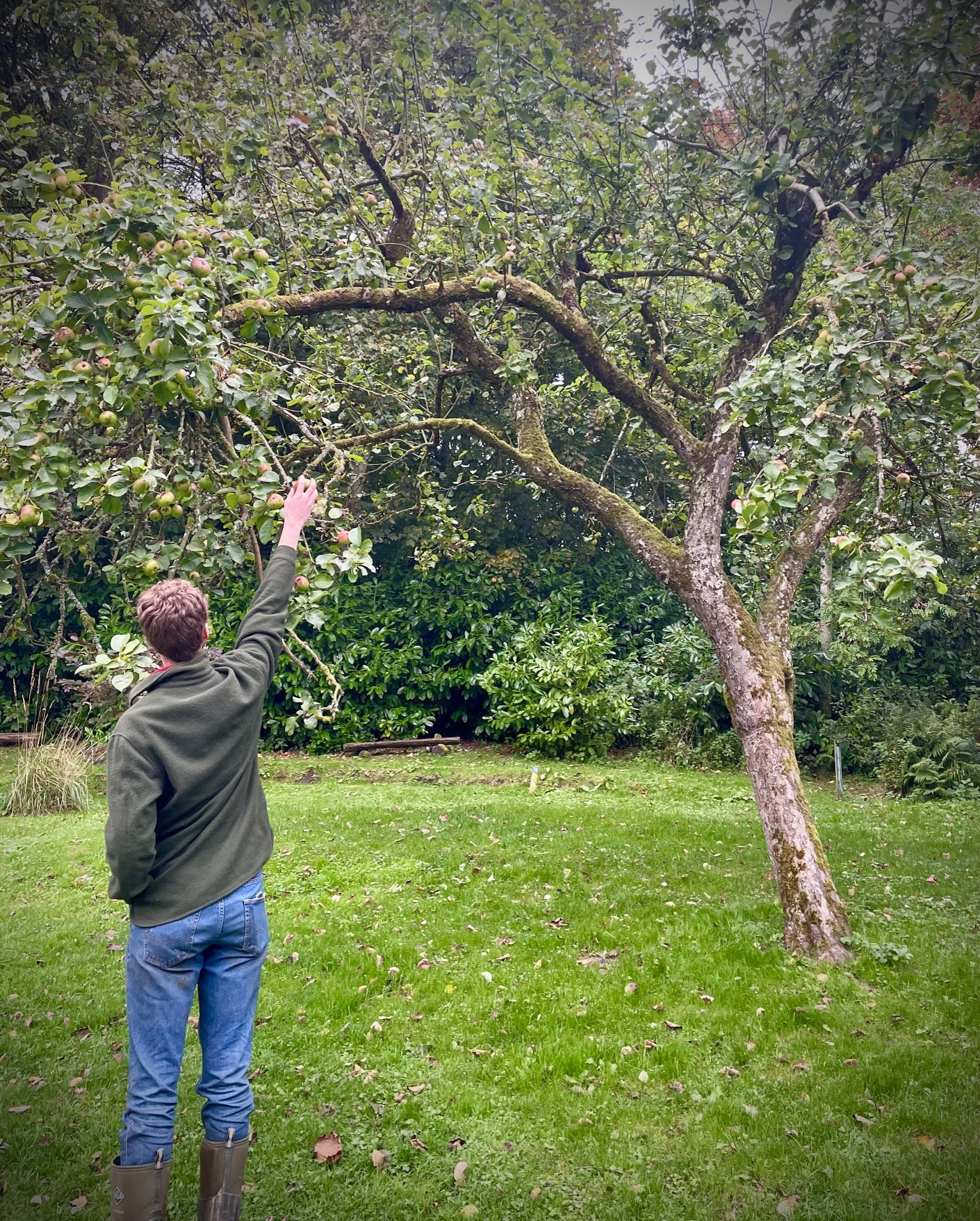They’re the flavour of autumn, the original crumble filling, and it wouldn’t be Halloween without dooking for them or cracking though caramel to eat their flesh.
Ubiquitous in every fruit bowl, apples are the most commonly grown and eaten fruit worldwide, but they came across as anything but ordinary at this year’s Borders Organic Gardeners’ Apple Day.
Like BOG’s Potato Day, which I featured in the podcast back in March, Apple Day celebrates the extraordinary diversity and cultural importance of a foodstuff we often take for granted.
At the heart of Apple Day was a display of over a hundred locally grown varieties showing all the colours of autumn. An impressive sight, but why are so many different kinds of apple grown here in the Scottish Borders?
In fact, these were just some of those grown here historically, a small portion of the 2500 varieties still cultivated in the UK, and a mere fraction of the 7000 produced worldwide.

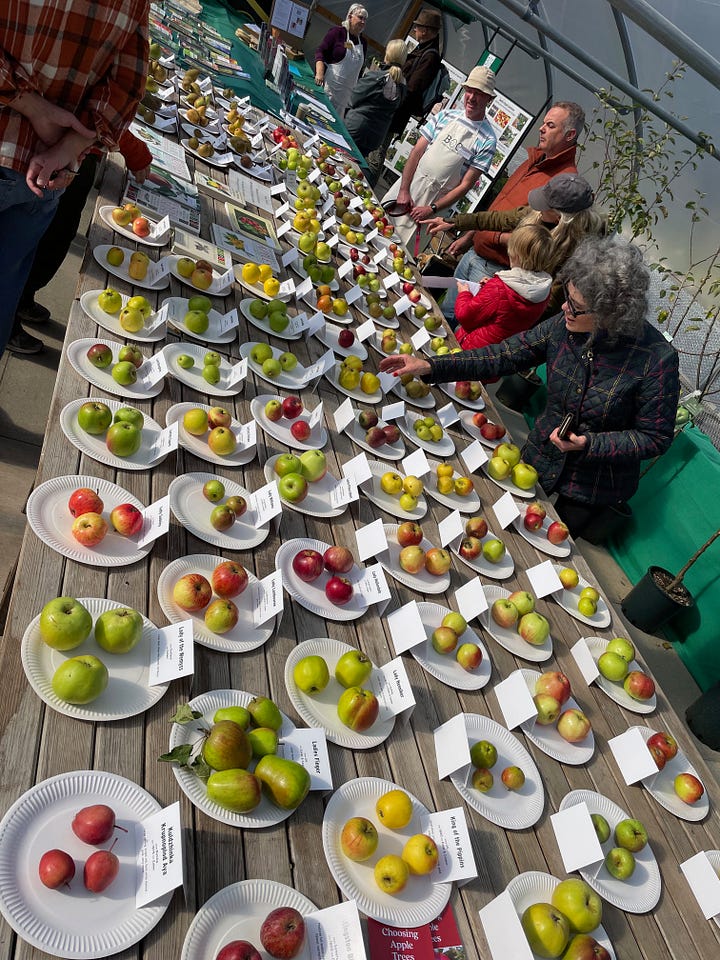
Apple varieties proliferate in part because an apple seed is rarely true to its parent. It might create a new valuable variety, but is more likely to revert to mimicking its wild ancestor the crab apple, and - like its relatives the hawthorn and rowan - grow hundreds of tiny tart fruits that are more seed than flesh. Creating an apple worthy of eating requires human intervention. For hundreds of years, we have been grafting scions onto good rootstock - here in the Borders these skills likely came from France via the monks working the gardens of our many abbeys - aiming to produce varieties ideal for cider or stews, as a pairing for port and cheese, to store through the winter, or to meet specific environmental challenges.
People have innovated apples to suit changing tastes and requirements for as long as we’ve been eating them, and each variety holds a thread leading back to those who created, prized and tended them. Some left their signature in the name, such as James Grieve, a Peebles-born breeder keen to create an apple suited to Scotland’s climate, or the apple developed by Dr Robert Hogg of Duns; the ‘White Melrose’.
Others memorialise intriguing stories, such as the Bloody Ploughman - a variety which has been added to Slow Food’s Ark of Taste.
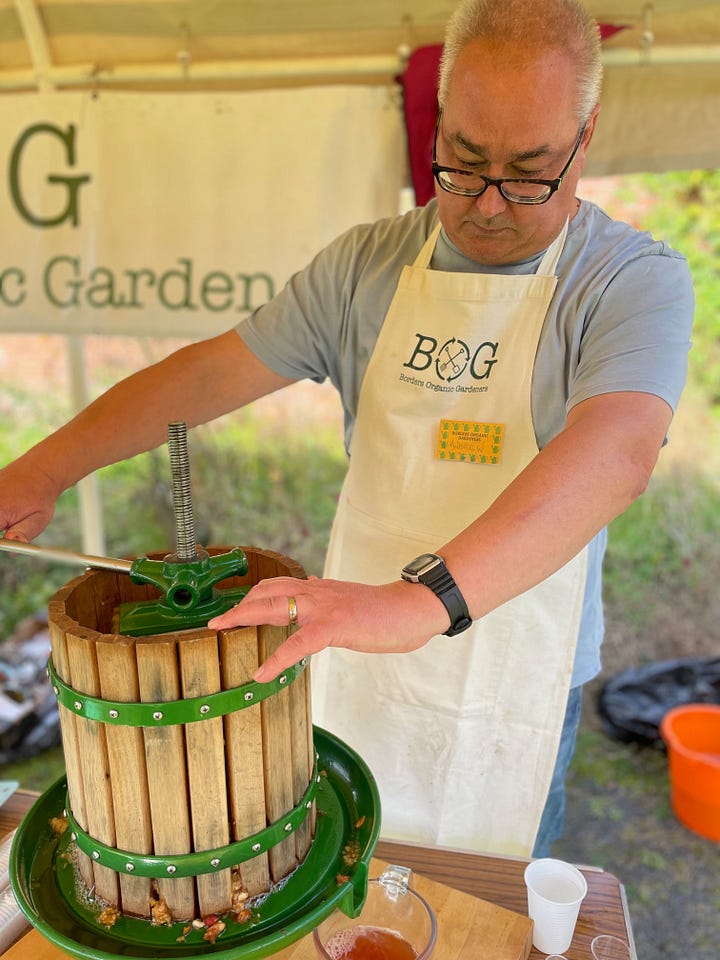
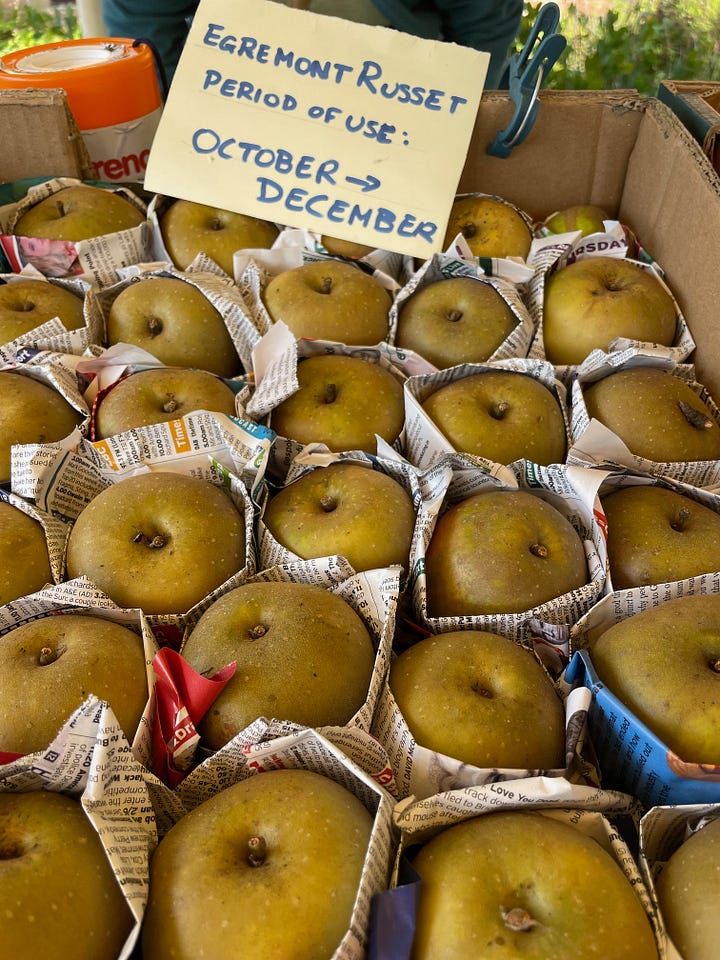
All these different flavours, colours and cooking qualities offer insight into what people have found attractive throughout history.
And so, looking at the 6 comparatively bland varieties you can buy in our supermarkets now, it seems we’ve chosen crispness over complexity and value the quality of remaining uniform and unblemished despite lengthy transport and storage.
What does it say about our contemporary taste that we favour aesthetics over flavour?
We are so committed to this particular selection - the 5 ‘eaters’; Granny Smith, Golden Delicious, Braeburn, Pink Lady, Gala, and one ‘cooker’; Bramley - that we import them from New Zealand, Italy and France throughout the year rather than eating British varieties in season.
The contrast between those commercial varieties and the mottled, irregular, strange and scented array at Apple Day, made me feel sad and a little cross that we’ve allowed so much of our food - not just apples - to become limited and expressionless in the name of convenience and commerce.
It has a huge impact on flavour and our eating experience, but the ramifications reach further into our lives than we might know.
There were once orchards dotted all over our landscape here in the Borders. Until the 20th century, apples were vital for domestic food production and local trade, propagated in their thousands by noted nurseries such as Dickson’s of Hassendean, and considered a necessary asset for any grand house or estate. These would have enriched our local food culture with apple based recipes, products and preserves, but were also fantastic for nature; orchards being rich havens of biodiversity.
In the mid 20th century, the simultaneous demise of the country house, the rise of industrial farming and the drive to build more housing, saw orchards grubbed up or forgotten along with their associated culinary knowledge and horticultural skills.
Beyond simply displaying what remains of our apple culture, the BOG Apple Day suggested the potential for revival. In this episode of the FoodScape, I spoke with businesses exploring the economic opportunity in single variety juices from local trees, passionate gardeners ready with advice on starting an orchard, I tasted delicious products inspiring new uses for old trees, and heard about the growth of community orchards as sites of common good, where we can reconnect with nature, our food, and one another.
It all suggests we should see apples at the core of our Borders’ foodscape once more.
Some of the above information came from the wonderful book “Apples and Pears: a history of orchards in the Scottish Borders and North Northumberland”, by Elizabeth and John Towner, who also features on the podcast.
The rest was learned from those I spoke with at Apple Day, and who featured on Episode 3. Have a listen!
S2.Ep3: Apples, with Laprig Valley and BOG
A day out at the Borders Organic Gardeners’ Apple Day, and an interview with Laprig Valley Apple Juices.

